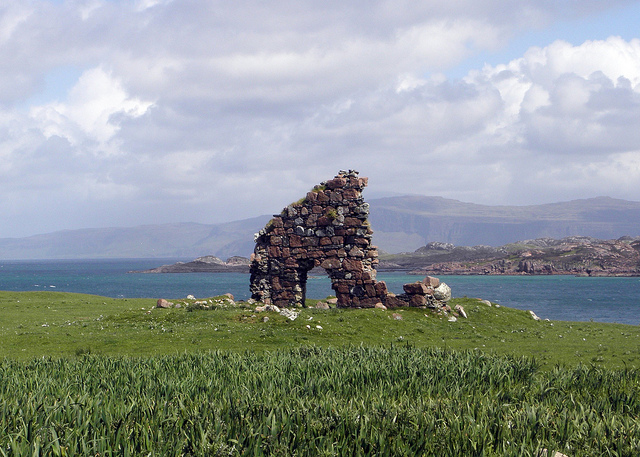
A striking duality drove Australia’s thinking about France in the 20th century. Expressed as a chant it went: In Europe, Good! In the Pacific, Bad!
When Australia turns its gaze to Europe it sees France as an old ally, a cultural cornucopia and an expression of the Enlightenment. What finer destination could there be for an Oz traveller?
In the South Pacific, though, Australia long saw France first as a colonial rival then, just a foe. The fear of France’s Napoleonic potential in the neighbourhood was one of the elements driving Australia to become a country in 1901. Australia found it a lot easier to love France when it was on the other side of the world. In the South Pacific, we oscillated between fear and forgetfulness.
The suspicion about what France is up to in the neighbourhood was present from the moment of settlement. Six days after Captain Arthur Phillip’s First Fleet reached Sydney in January, 1788, the French explorer Jean-François de Galaup La Perouse arrived. Contacts between the two parties were polite during La Perouse’s six week stay, but Phillip never met La Perouse and the British were secretive about their purposes and plans. Such cordial distrust flavoured much that followed.
Australia’s has a deeply-rooted strategic denial instinct in the South Pacific. The instinct drives a constant quest to be the top strategic partner for Island states while minimising the role of outside powers. The fact that Australia can never achieve complete strategic denial in the South Pacific means that the instinct is beset by a faint, constant ache. Throughout the 20th century, that ache was directed at France—with other targets such as Germany and the Soviet Union/Russia, going as well as coming.
Australia’s South Pacific fixations—and the strategic denial twinge—are founding elements of the Commonwealth, actually expressed in the Oz Constitution.
The Constitution makes no mention of the post of Prime Minister or the function of Cabinet government, but the South Pacific role gets an explicit tick. Section 51 is at the heart of the document, defining the legal powers of the Commonwealth over such areas as trade, currency, defence and communications. Subsection 29 identifies the power over External Affairs. The next clause, Subsection 30, goes further and identifies the power over the ‘relations of the Commonwealth with the islands of the Pacific.’ The two clauses express an implicit division of responsibilities. The new nation born in January, 1901, was happy to hand over the operation of most External Affairs powers to London; but, from the start, Australia would take hold of its interests in the South Pacific.
The Pacific element in the Constitution reflects the way the presence of other powers in the Pacific in the 19th century galvanised the six Australian states to federate.
The traditional inability of the states and the federal government to agree on much at all—still, today, a defining characteristic of the federation—makes the original act of creation even more striking. The first major convention of the states to discuss federation in 1883 was driven by the immediate need to get a common policy to oppose French and German colonisation in the Pacific. That was why New Zealand and Fiji were also at that first Sydney conference.
The first Australian spy, shortly after federation in 1901, was an Australian businessman who spoke French, dispatched to check French intentions in the Anglo–French condominium of the New Hebrides. France reciprocated the suspicion, and was still looking for Australian plots nearly 80 years later in the difficult breech birth that turned the New Hebrides condominium (aka: the pandemonium) into the independent nation of Vanuatu. The older residents of Noumea used to recall Australia’s naval show-of-force in World War 2, intended to ensure that New Caledonia sided with the Allies, rather than with Vichy France.
Australia’s dealings with France were strained by the traumatic birth of Vanuatu, Kanak unrest in New Caledonia in the 1980s, and 30 years of acrimony caused by French nuclear tests in Polynesia.
The twin issues of Kanak independence and French nuclear tests provided the then South Pacific Forum with high-profile, vital issues that united all Island leaders. France gave the Forum a convenient ‘hate figure’. The foreign foe is always a useful unifier.
One of the regional achievements of the Forum—the 1985 South Pacific Nuclear Free Zone Treaty—was made possible, and necessary, by anger at France. And France’s signing of the protocol of the Treaty, in 1996, enshrining the end to its nuclear tests, marked the moment when some rapprochement between Paris and the Pacific could truly begin.
The rapprochement process delivered France a big win last year—full membership of the Pacific Islands Forum for New Caledonia and French Polynesia. Forum membership is an early reward for the long-game France has played in New Caledonia over three decades. And next year that 30 year Accords process will be put to the vote in New Caledonia.
The old Australian fear of France in the Pacific has faded.

